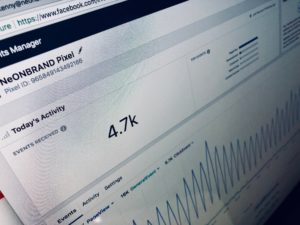Pressemitteilung
Five trends for digital advertising: 2023 brings more videos, more context, more diversity, more AI, and more privacy
Zurich and Berlin, December 6, 2022 – The advertising world is constantly moving. The digital advertising experts at marketing analytics startup Nexoya reveal which developments will be important in 2023: After a pandemic-related decline, ad spending is rising again. Videos remain popular, but users’ attention spans are decreasing. As a result, content is getting shorter, and context is becoming more important. While channel diversity is increasing and a strategically planned mix is becoming more important, return on advertising spend, or ROAS is declining. AI is automating more and more publisher platforms, leading to more effective ad serving. Privacy is becoming more stringent; this requires a replacement for multi-touch attribution models. Nexoya also sees potential in leveraging marketing-mixed modeling for digital advertising.
Trend 1: Advertising spending to rise
Digital ad spending is expected to have grown 8.6 percent in 2022, according to a recent report from Insider Intelligence. The pandemic had previously led to a slowdown since 2020, causing spending to increase by only 5.8 percent. The continued growth of social media platforms and advertising on marketplaces such as Amazon drives the upswing. Double-digit growth is expected in 2023. Formats that will grow particularly strongly are video, up 19.2 percent, and social media, up 18.4 percent. Spending on advertising formats on mobile devices is also expected to grow strongly over the next two years, with an increase of 23.1 percent.
Trend 2: Video and context-based advertising on the rise
Videos continue to be very popular, especially on social media platforms. Users will consume even more video content across all digital channels in the coming year. Platforms such as TikTok, BeReal, YouTube Stories, and Instagram Stories are distributing more and more short video content, further reinforcing this trend. Marco Hochstrasser, co-founder and CEO of Nexoya, has closely monitored the digital advertising market for five years. He explains, “The attention span of users continues to decrease. Advertisers must adapt their advertising strategies to meet the demands of this new digital marketing era. Companies strive to provide relevant and targeted advertising to their audiences, so we will also see an increase in context-based advertising.”
Trend 3: Channel diversity increases, ROAS decreases
The right mix and variety of channels are crucial for success in digital advertising. Many marketers focus on Google and Meta. But there are also new providers on the market to keep an eye on, such as Hive Social and Mastodon. Hive Social is a social media platform focusing on user privacy and content creation. Mastodon is similar to Twitter but is based on open source and runs decentralized. Both platforms offer a user experience that is very different from Google and Meta. They should be included in the considerations when developing the marketing and advertising strategy for 2023. In addition, there are local platforms that can be important for channel diversity. One example is naoo from Switzerland.
Nexoya optimizes digital multi-channel marketing campaigns based on artificial intelligence. The startup manages more than six percent of total digital advertising spend in Switzerland in its SaaS platform. The aggregated, anonymized, and standardized data of its customers give Nexoya insights into developments in the advertising market. Flavia Wagner, Head of Customer Experience, evaluated the data in terms of Return on Advertising Spend: “Our ROAS analysis shows that the diversity of advertising channels can have a major impact on performance. For example, we see from our data that advertisers who use a variety of channels see an average ROAS increase of up to 20 percent compared to those who do not. And we expect this trend to continue as more advertisers become active in the digital advertising market.”
Trend 4: Publishers benefit from AI and automation
Major publishers increasingly use artificial intelligence and automation for their platforms to create powerful and effective ads. Facebook’s Advantage+ and Google’s Perfmax are two examples of this trend. Advantage+ is Facebook’s own AI that helps optimize ad creation and placement. Perfmax is a tool that automates ad creation. Both tools help advertisers increase performance and efficiency when creating ads. Marco Hochstrasser says, “Of course, these technologies don’t work equally well for everyone. Our data shows that about half of the advertisers who use PerfMax get better results. These technologies for automatic ad creation and placement have great potential. We expect similar developments from other publishers and Google & Meta. There is a clear trend to automate creating ads and placing them for the right audience.” In many cases, automating processes leads to better results and frees up advertisers’ time to focus on other things “It also means that ads are more likely to be relevant and effective, as they are created and targeted by algorithms rather than humans” says Marco Hochstrasser.
Trend 5: Data protection requires replacement for multi-touch attribution models
Data protection is also a topic that will remain important well beyond the coming year. With the new data protection regulations, the need for a replacement for multi-touch attribution, or MTA, is increasing in marketing departments. Attribution models provide advertisers with information about the importance of each touchpoint in their clients’ customer journey. This means marketers must find new ways to track and attribute conversions. “In the next year, we’ll see a strong focus on first-party data, creative storytelling, and personalization. These trends will help create more successful campaigns that deliver good results while respecting consumer privacy,” says Marco Hochstrasser.
He is sure that digital advertising will change noticeably in the next few years: “One of the biggest trends we predict is the wide use and combination of different marketing mixed models. This approach combines traditional and digital marketing elements and uses statistical data analysis to get a holistic view of the customer base. There is still a lot of uncertainty here and room for misinterpretation, but a lot will happen in this area in 2023.” Marketing-mixed modeling helps advertisers better understand where the potential of each marketing channel lies and how the different channels interact with each other. It is a long-proven concept, but its professional application to digital marketing is still in its infancy.
Images

While the variety of channels in digital marketing will increase in 2023 and a strategically planned mix will become more important, the Return on Advertising Spend, or ROAS, will continue to decline. (Photo by Kenny Eliason on Unsplash)
Download: https://unsplash.com/photos/Ah4F6g-OmgI/download

Videos continue to be extremely popular, especially on social media platforms. In the coming year, users will consume even more video content across all digital channels. (Photo by Adem AY on Unsplash)
Download: https://unsplash.com/photos/lqyqm2ICIcY/download
About Nexoya
The startup Nexoya Ltd. with the headquarter in Zürich, is since 2018 developing a platform for automatic analysis for digital marketing of mid-to large size corporates – with high usability and high data privacy focus. Based on Machine Learning, the SaaS Platform “nexoya Marketing Analytics” optimizes multichannel marketing campaigns. It aggregates all relevant metrics out of various channels such as Google, Instagram, or Facebook, allowing you to have well-arranged reporting and monitoring of your KPIs. Based on the gathered data and thanks to Artificial Intelligence (Predictive Analytics), Nexoya optimizes your campaign budget thereafter. With that, it helps Marketing teams to reduce their operational efforts, simplify automated data-driven decisions and reduce your ad-spend by up to 70 %. Nexoya is only gathering nonpersonalized data and is hosting strictly in certified data centers in Switzerland. Customers are well-known businesses such as Emmi Group, Generali, CSS, or the housing agency. www.nexoya.com
Press contact
Sabrina Ortmann, Nexoya
Tel: +49 (176) 64107556
E-Mail: press@nexoya.com